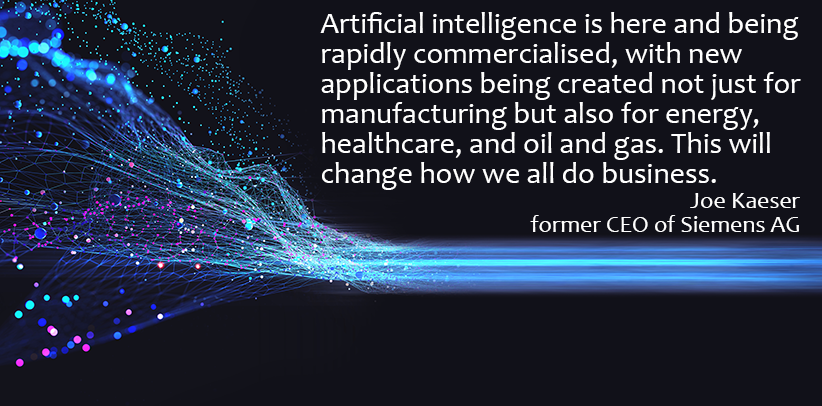The term AI means different things to different people, depending on whether you're a scientist, mathematician, or philosopher. However, as an overarching term, it references a computer system capable of sensing, combining the information gathered, and drawing inferences using reason. When applied to an intellectual task, AI aims to:
- - Gather and synthesise data
- - Provide information
- - Solve problems
- - Initiate actions
- - Interact with humans
And it can accomplish these tasks in a way almost indistinguishable from human behaviour and mannerisms.
How artificial intelligence works
The engine room of AI is machine learning (ML). Machine learning is a subset of AI that uses computer algorithms, or a precise set of rules, to recognise patterns in data, learn insights, and apply the lessons to inform increasingly better decision-making. This approach is the fundamental difference from most programming, which begins with an outcome in mind and creates the steps necessary to achieve it. Human knowledge constrains the latter approach, while experiential learning empowers the former.
Most ML systems use supervised learning, where we give the computer hundreds of problems while providing the correct answers. These training data sets comprise many thousands or millions of examples. Once complete, we can give the computer new examples without the answers, and if the training has been successful, the output will predict the correct answers very accurately.
Unsupervised learning attempts to have computers learn the same way as humans, recognising patterns and drawing conclusions. The computer must build an internal representation of the world and generate content from that model, using constant feedback to refine the model.
Deep learning is a more advanced form of machine learning. It attempts to model itself on the brain by programming computers to act like interconnected brain cells. This interconnection creates an artificial neural network1 mimicking the brain's structure, allowing it to understand inputs and make decisions like humans.
The advantages of deep learning are that it has parallel processing capability, distributes data across the network to ensure fault tolerance, and works with incomplete knowledge. Computer vision, language modelling, and automatic speech recognition employ deep learning capabilities.
Why AI is important
The volume of data produced daily exceeds the ability of humans to sort, analyse, and take appropriate action. It can quickly sort incredibly complex and large datasets, uncovering patterns humans would miss.
An example is its use in radiology, where it can scan an x-ray and provide predictions based on the identified patterns. The pharmaceutical industry has used AI to discover new drugs, with the first AI-invented drug molecule patented by a group of British and Japanese scientists in 2020.
Using AI bestows multiple benefits to an organisation. It improves data integrity by reducing human error and provides previously unobtainable insight into structured and unstructured data. Providing these benefits faster and emphasising continuous improvement allows organisations to automate complex processes, driving efficiency and competitiveness into their business. Costs reduce, and valuable human resources become available for other priorities.
What industries use AI?
Artificial intelligence is ubiquitous in our society, although often unrecognisable. This invisibility is due to the technology seldom being deployed in its own right; rather, developers package it into discrete products that use its underlying capability as inputs to a process providing products or services.
The lack of recognition is also down to a paradox within society called the 'AI Effect" that occurs once an application becomes part of the prevailing practice. Society then dismisses it as pure computation and no longer considers it AI.
Retail, healthcare, banking, and customer service industries use AI to optimise inventories, detect fraud, provide virtual assistance, and process images. One industry investing heavily in AI is manufacturing. A study2 by the IT services and consulting company Capgemini shows that Europe leads the pack with over 50% of manufacturers implementing AI solutions. Japan is second at 30%, and the US is third at 28%.
Typical uses in manufacturing are predictive maintenance, generative design, quality assurance, and robotics. Creating digital twins, managing inventory, and optimising processes are also key focus areas. Many of these we'll discuss in this ongoing series as we investigate the intersection of technology and maintenance.
Conclusion
Artificial intelligence impacts our daily lives to an unimaginable degree, if often unseen. However, the Harvard Business Review3 suggests the world has yet to realise most of the big opportunities from AI. In the following articles in this series, we'll look at several products and services that use AI to benefit the maintenance industry and gain insight into their extraordinary contribution. We'll also glimpse the future as people continue to find novel ways of exploiting the capabilities of this exciting technology.
1 https://www.javatpoint.com/artificial-neural-network
2 https://www.capgemini.com/wp-content/uploads/2019/12/AI-in-manufacturing-operations.pdf
3 https://starlab-alliance.com/wp-content/uploads/2017/09/AI-Article.pdf

